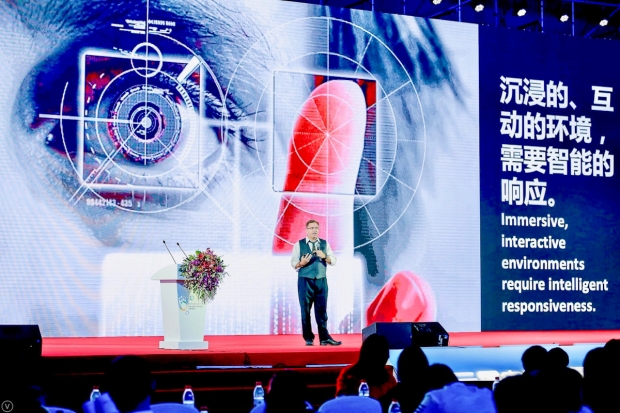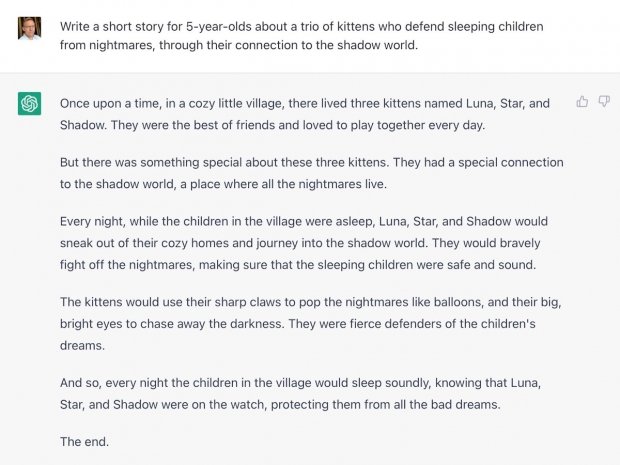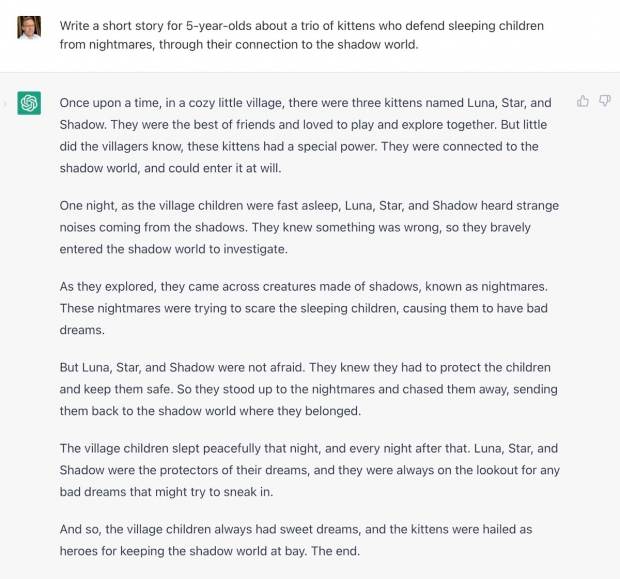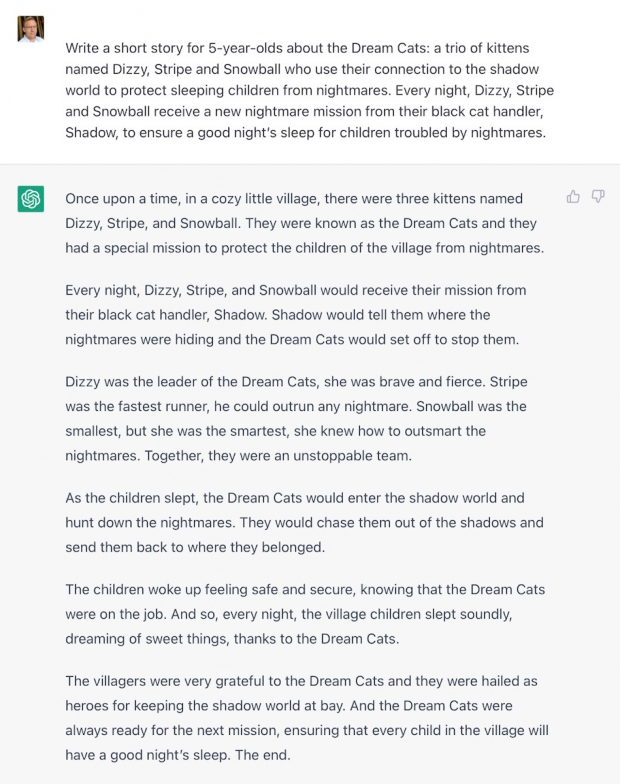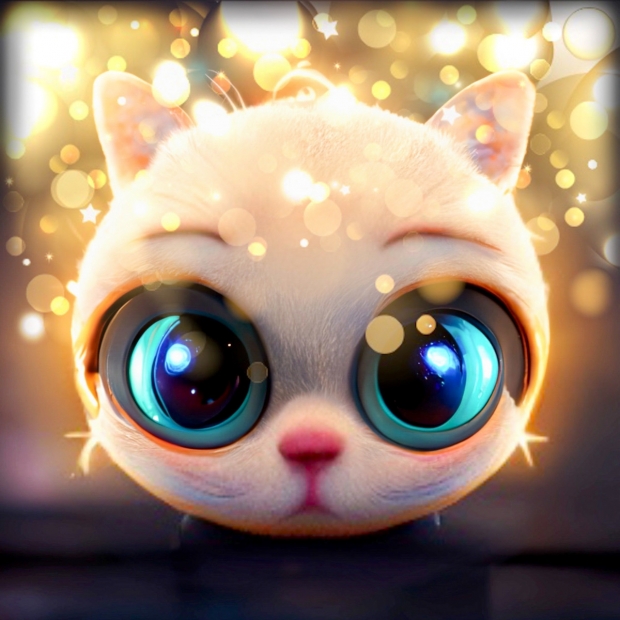ChatGPT will be for creators what plastic surgery is for actors: everyone will use it, but few will admit it.
Since 2016, my presentations on immersive media and the future of entertainment have included observations about the need for generative AI tools in interactive content formats that create environments, characters, and stories in response to real-time user decisions. Some of my earlier predictions have aged well while others have not — namely, those about the pace of disruption within creative professions.
The pace of that disruption, accelerated last summer by the advent of Midjourney and other AI image-generation platforms, has recently been supercharged by the introduction of ChatGPT: an AI chatbot trained by OpenAI, the AI research and deployment company responsible for DALL·E 2.
What is it?
ChatGPT is a machine learning model designed to generate human-like text. It can be fine-tuned for various natural language processing tasks, including chatting with users, answering questions, debugging code, and creative writing. Small wonder that OpenAI has just received a $10 billion investment from Microsoft, and has thrown Google into a tizzy.
Among ChatGPT’s strengths:
- Its pre-training on a vast, diverse dataset makes it capable of handling a wide range of natural language processing tasks
- Its ability to generate human-like text makes it well-suited for conversational interfaces and chatbots
- Its simple fine-tuning process makes it adaptable to various applications with small amounts of data
But ChatGPT also has notable weaknesses:
- Its massive computational requirements make it impractical for certain applications
- It can generate text which contains factual errors or is incoherent
- Its pre-training process can lead to biased output
In short, ChatGPT is a powerful natural language processing tool with many potential applications that should be used with caution. (Think of it as an unfiltered colleague who provides useful output but should never be allowed to speak directly in a meeting.)
Why should I care?
Whether you know it or not, ChatGPT is already insinuating itself into the fabric of our daily lives via real-world applications such as:
- Email correspondence
- Programming and debugging tasks
- Personalized language learning and translation services
- Conversational interfaces for information queries and online shopping
- Composition and editing of blog posts*, news reports, promotional copy, research papers, stories, poems, and scripts
I took the plunge after reading how CEOs at Davos were using ChatGPT “as a writing assistant and thought partner”. I already had an OpenAI user account from my DALL·E tests, so I logged into the ChatGPT link — clicking through the Blade Runner-esque CAPTCHA chore of convincing a robot that I’m a human.
Once in, my first thought was to ask the “free research preview” of ChatGPT to explain itself to a 5-year-old. ChatGPT replied:
ChatGPT is like a magic robot that can talk and write. It can understand what you say and write back to you. Just like how you learn new words and sentences, ChatGPT also learns new things, so it can understand and respond to more and more questions. It’s like a talking computer that can help you find information, tell you a story, or play a game with you.
My 56-year-old brain got the picture. I then prompted ChatGPT with a perfunctory email request, Davos CEO-style. The AI spit out a perfect template in seconds:
So far, so good — but email is low-hanging fruit. It was time for something freeform. I asked ChatGPT to write a short story based on a development concept, intentionally providing it with a very simple prompt. ChatGPT returned a decent conventional story in under 30 seconds:
I clicked the “regenerate response” button, and ChatGPT created a new take on the story from the same prompt:
I clicked “regenerate response” one more time. ChatGPT seemed to like its last version, which it expanded upon instead of discarding:
Finally, I prompted ChatGPT with additional premise information. Chat GPT took a bit longer to reply this time (almost 40 seconds), synthesizing the premise particulars into its response:
Was I impressed? Yes. Would I use any of the output as is? No.
As a starting point, ChatGPT gets you past “blank page paralysis” and gives you things to react to, recombine and refine. The speed and quality of the turnaround are incredible, but there is definitely an art to “prompting” (otherwise known as “directing”) and the need for subsequent editing to provide your own perspective and voice.
I took a different tack and asked ChatGPT to draft a screenwriting syllabus — once again with intentionally abbreviated input cues. ChatGPT was almost charmingly candid in its admission that it couldn’t fulfill my overreaching request but still returned remarkably cogent advice:
I also fed ChatGPT with extensive human-generated development material, asking it to “improve” the input, and was impressed with the quality of the output. Say what you will about the ramifications of the technology, but if you’re a creator struggling to encapsulate your concept in 100 words for a blurb, ChatGPT is your friend.
What should I do?
Try it!
I asked ChatGPT how non-technical people can begin using it and received the following obtuse response:
Non-technical people can still use ChatGPT, even if they don't have a background in natural language processing or machine learning. Here are a few ways to get started:
- Use pre-built solutions: There are a variety of pre-built solutions available that allow non-technical people to use ChatGPT without needing to understand the underlying technology. For example, OpenAI's GPT-3 Playground is an easy-to-use interface that allows users to input prompts and generate text output from the model.
- Partner with technical teams: Many companies have technical teams that can work with non-technical people to use ChatGPT. They can help with the setup and integration of the model into the application.
- Use third-party services: There are a number of third-party services available that allow non-technical people to access the power of ChatGPT. These services can handle the technical aspects of using the model and provide a simple, user-friendly interface for users.
- Learn more about the technology: While it's not necessary to be an expert in natural language processing or machine learning to use ChatGPT, it can be helpful to learn more about the technology. This will give you a better understanding of how the model works and how to get the most out of it.
It's worth noting that regardless of the method chosen, it's always a good idea to work closely with a team of experts that can help you use the model effectively and responsibly.
This is an example of where human experience and empathy still hold sway. Wanna play with ChatGPT? Here’s how:
- Go to www.openai.com
- Scroll to the bottom of the landing page, and click on ChatGPT under “Featured”
- Click on Try ChatGPT
- Log in (if you’re already a DALL·E user) or sign up (if you’re a newbie)
- Chat away! Ask anything. Push the envelope. Have fun.
What does this mean?
Like it or not, everything is changing.
Why does the world tread carefully around Russia as they make war on a neighboring nation? Why is North Korea hell-bent on becoming a nuclear power? Because the nuclear threshold is a game-changer between the “haves” and the “have-nots”. The same holds true for AI, across all areas of human endeavor. (ChatGPT isn’t helping me expound here, FYI.)
The recent proliferation of “100% human-generated” badges and memes seems tone-deaf to the innumerable ways that we creatively leverage technology: from automated 3D rigging tools in Unreal Engine, to digital brushes on our iPad apps, to the manufacturing of our Faber-Castell pencils.
The results of my initial experiments with AI-assisted content creation have been promising: the technology is impressive and, although you can get cheap results with no effort, there’s definitely an art to applying it productively.
Using AI, individual creators can take content from concept to completion with unprecedented speed and scale. Wage slaves may fret over the disruption of the status quo, but entrepreneurs will understand this as an inflection point that empowers them to do more work, more quickly, and more independently.
Either way, AI is here to stay. Plan accordingly.
- AUTHOR’S NOTE: I thought it would be remiss of me to blog on ChatGPT without enlisting the AI as a “writing partner” in the piece itself. I had already experimented creatively with the platform, and compiled a list of questions for ChatGPT to address with the article in mind. I subsequently edited ChatGPT’s output based on my own experience and perspective, wrote further atop that, added color & polish, and inserted related links & images before submitting for publication. Thanks, robots!

